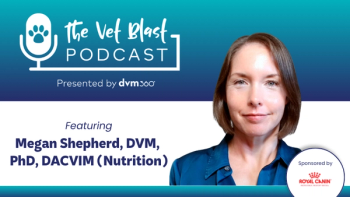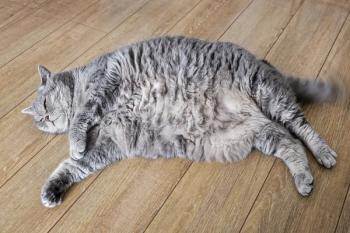
A renewed appetite for addressing inappetence
A look at the physiology of hunger and the role of ghrelin, dubbed the hunger hormone.
"No thanks, I'm not really hungry." (Getty Images)In a presentation sponsored by Aratana Therapeutics called “Inappetence in dogs: What's new in its management?” at the 2016 American College of Veterinary Internal Medicine (ACVIM) Forum, Audrey Cook, BVM&S, MRCVS, DACVIM, DECVIM-CA, DABVP (feline) briefly reviewed the physiology of appetite regulation and how a new targeted treatment may aid in our management of inappetent dogs.
Loss of appetite: The canary in the coal mine?
Dr. Cook explained that while we tend to see anorexia secondary to a number of underlying medical conditions, it is often one of the first signs of illness and can play a critical role in patient outcomes. For example, recent studies show that cats can lose 11% of their body weight in the six to 12 months before chronic kidney disease (CKD) is diagnosed.1 Loss of muscle mass, often evident months to years before the onset of azotemia, has also been associated with shorter survival times in dogs with CKD.2 Further, with respect to neoplasia, Dr. Cook pointed out that anorexia can exacerbate the adverse effects of chemotherapy, which may lead to early discontinuation of therapy.
The hungry hormone
Our knowledge of appetite regulation has evolved with new research in veterinary medicine focusing on the role of hormones in both stimulating and suppressing the hunger response. One of these hormones is ghrelin, also known as the hunger hormone. Made in the gastrointestinal tract, ghrelin promotes food intake by activating orexigenic (appetite stimulating) neurons and inhibiting the anorexigenic neurons at the level of the hypothalamus. In addition, Dr. Cook shared that ghrelin triggers release of growth hormone-releasing hormone and subsequent growth hormone release from the pituitary gland. Together, these physiologic mechanisms contribute to an increase in muscle mass as well as weight gain. Other ghrelin attributes include anti-inflammatory and prokinetic effects.
So what can we do for our inappetent patients?
First, “Fix what you can fix,” said Dr. Cook. Every effort should be made to manage the underlying medical issues contributing to the anorexia. Supportive measures such as anti-nausea medication, intravenous fluid therapy, and warming food are some of the interventions that can be considered for anorectic patients.
For patients that remain inappetent despite management of their underlying disease, appetite stimulants can be incorporated into the treatment regimen. Mirtazapine is the drug most often used in this scenario, but Dr. Cook noted that careful dosing is required, particularly in cats, to avoid the drug's sedative and hypnotic effects.
Dr. Cook also discussed ghrelin agonists for appetite stimulation, which have been used successfully in human medicine for weight gain and gastrointestinal motility. A ghrelin receptor agonist has now been developed for veterinary use-capromorelin oral suspension (Entyce-Aratana Therapeutics). This drug, approved by the FDA in May of this year, has been evaluated in safety and efficacy studies and is indicated for use in dogs for appetite stimulation. It is labeled at a dose of 3 mg/kg orally once a day. The drug is expected to be available in February 2017.
References
1. Greene JP, Lefebvre SL, Wang M, et al. Risk factors associated with the development of chronic kidney disease in cats evaluated at primary care veterinary hospitals. J Am Vet Med Assoc 2014;244:320-327.
2. Parker VJ, Freeman LM. Association between body condition and survival in dogs with acquired chronic kidney disease. J Vet Intern Med 2011;25:1306-1311.
Newsletter
From exam room tips to practice management insights, get trusted veterinary news delivered straight to your inbox—subscribe to dvm360.






